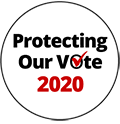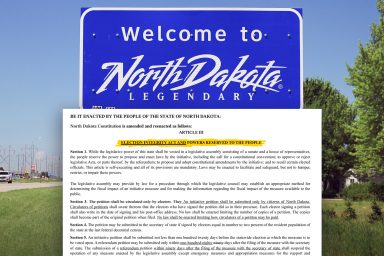Voting twice is illegal, but most states offer provisional voting so voters can cast a ballot as a fail-safe measure to make sure their vote is counted.
President Trump ignored the pleas of election officials across the country and once again, during a virtual rally last week, urged voters to commit what amounts to a federal crime by voting twice.
Millions of voters have requested an absentee ballot for the November election, and many will be voting by mail for the first time. Although voters are not allowed to intentionally vote twice, voters who did not receive their mail-in ballots in time, or who are not sure that they submitted their ballots properly, do have a fail-safe option. In most cases, they will be able to guarantee that their vote is counted by casting a provisional ballot in person.
Here’s what you need to know about provisional voting:
When Is a Provisional Ballot Necessary?
One of the reasons that provisional voting can be confused with voting twice is because some voters may find themselves filling out two ballots, especially considering nationwide efforts to disrupt access to mail-in voting — though only one of those ballots will eventually be counted.
Some voters may have requested an absentee ballot but never received it in the mail. Others may have submitted a ballot and, because of the likely Postal Service delays, be worried that their local elections office did not receive their ballot.
If a voter does show up at their polling place and their file shows that they requested a ballot by mail, they are offered a provisional ballot. This process is intended to act as a fail-safe mechanism so that individuals can ensure their vote is counted.
Voters may also fill out a provisional ballot when their eligibility to vote cannot be immediately determined. Given the increased number of first-time absentee voters and states that are automatically mailing every registered voter a ballot, there may be legitimate reasons to check each provisional ballot against the list of ballots received by mail to ensure that there are no duplicates.
How Often Are Provisional Ballots Counted?
Provisional voting is not a widely used practice. During the 2014 general election, 892,202 provisional ballots were submitted, representing about 1 percent of the total ballots cast.
After a provisional vote is cast and the polls close, election officials will verify whether an individual is eligible to vote. The catch is that some states require voters to return to their local elections office within a certain time frame to prove their identity if they live in a state with voter ID requirements. This can usually be done by showing a photo ID or utility bill to prove one’s residence.
If a voter needs to submit a provisional ballot because of an issue with voter rolls at a particular precinct, officials should be able to independently verify the information from a central elections office. In that case, the voter does not need to take any action.
Once the investigation is complete and the individual’s eligibility is confirmed, the ballot is accepted and counted. That is, unless the absentee ballot has already been accepted and counted somewhere else. If that is the case, the provisional ballot is simply discarded.
What Are the Grounds for Disqualifying a Provisional Ballot?
Depending on the state in which the election is being held, there can be a variety of reasons for disqualifying a provisional ballot.
The Help America Vote Act of 2002 mandated that states offer provisional voting. Since the process has been left up to the states to determine, it can vary from state to state. If a voter casts a provisional ballot at the wrong precinct, the ballot will be automatically disqualified in 25 states — even if the voter is properly registered. Some states, nevertheless, allow provisional ballots cast at the wrong precinct to be counted, but only for certain federal races. Maine is the only state that accepts provisional ballots for all elections regardless of the precinct where they are cast.
The National Voter Registration Act of 1993 exempted states from the requirement for provisional ballots altogether if they agreed to offer same-day voter registration. Three states — Idaho, Minnesota, and New Hampshire — do not have any process for provisional voting.
Provisional ballots can also be disqualified if a voter fails to prove his or her identity within a certain time limit. This happens most often in states with voter ID requirements. The most common reason for rejecting a provisional ballot is a voter’s failure to register.
At first glance, provisional voting may seem like an avenue for voting twice. However, the process is really a fail-safe measure intended to ensure that any eligible voter has the opportunity to have their vote counted. And, in the event that a voter has already submitted an absentee ballot, his or her second vote will be nullified by the rigorous process that most election commissions are now using to guarantee that no vote is counted twice.
Related front page panorama photo credit: Adapted by WhoWhatWhy from New Jersey National Guard / Flickr (CC BY-ND 2.0).



